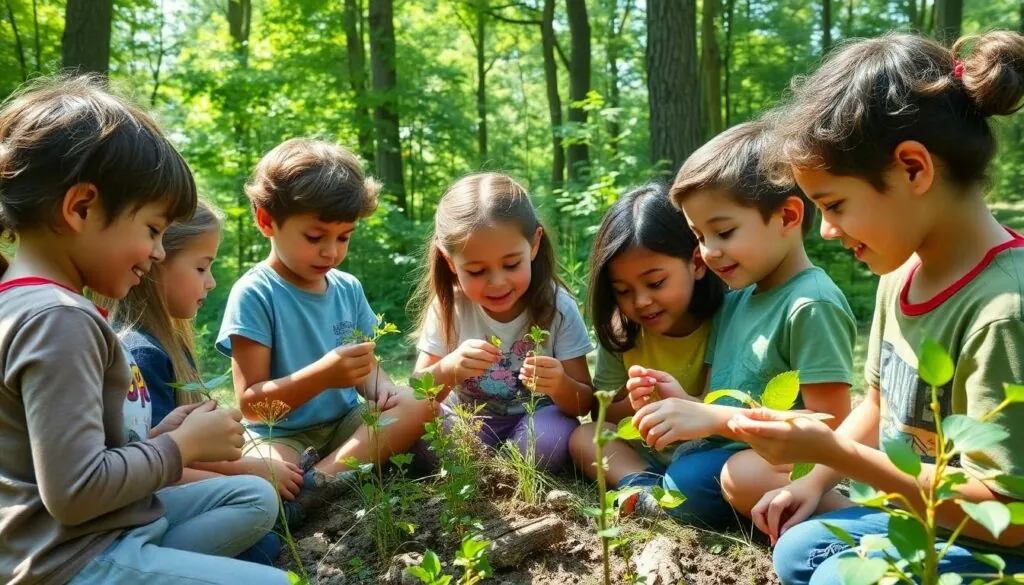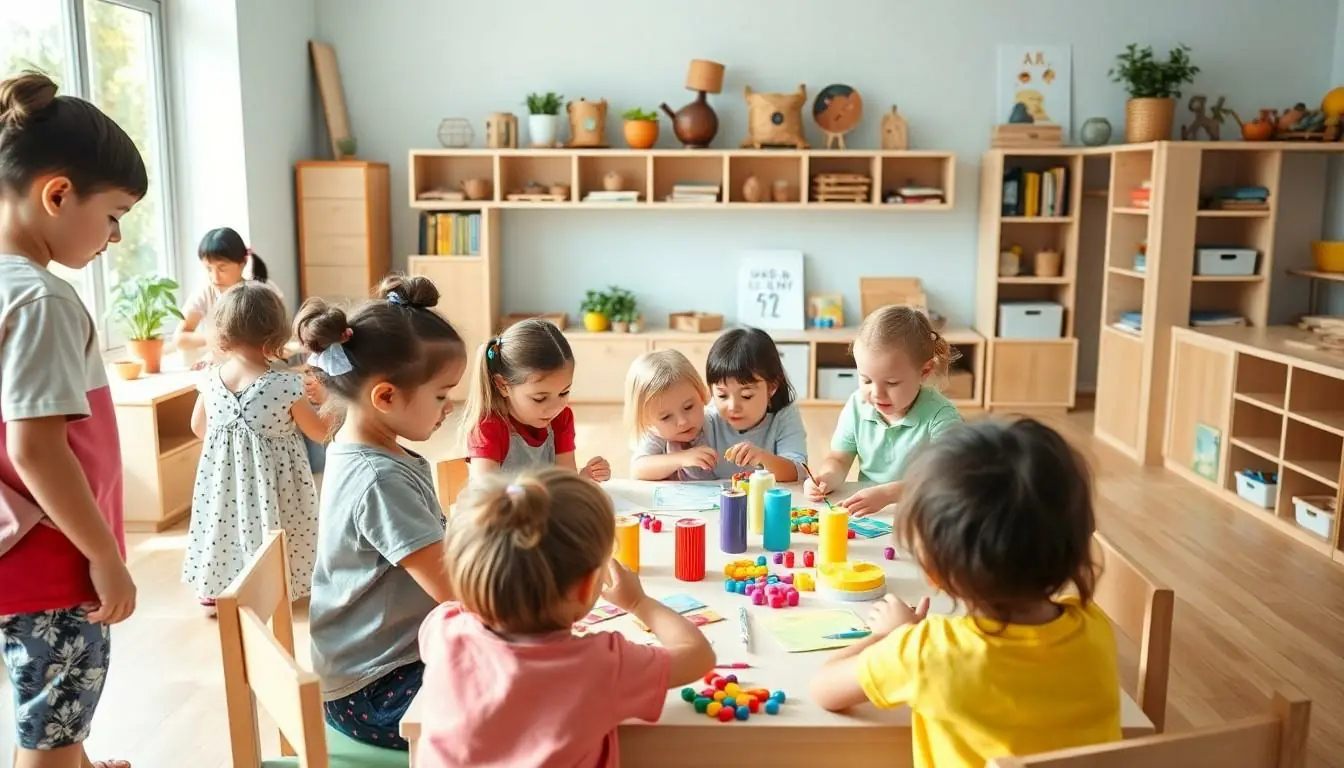Parents today are breaking free from the one-size-fits-all approach to elementary education. Alternative elementary schools offer unique learning environments that go beyond traditional classroom settings, empowering children to learn in ways that best suit their individual needs and interests.
From Montessori and Waldorf to project-based learning and forest schools, these innovative educational models are revolutionizing how young minds develop. These schools don’t just focus on academic excellence – they nurture creativity, emotional intelligence, and real-world problem-solving skills. With teaching methods that adapt to each child’s learning style, it’s no wonder more families are exploring these exciting alternatives to conventional education.
Table of Contents
ToggleWhat Are Alternative Elementary Schools
Alternative elementary schools offer educational approaches that differ from traditional public school systems. These institutions prioritize diverse teaching methods focused on student-centered learning environments.
Core Educational Philosophy
Alternative elementary schools embrace individualized learning paths that accommodate each student’s unique developmental pace. The curriculum integrates hands-on experiences engaging multiple senses to promote deeper understanding. Teachers serve as guides rather than lecturers creating dynamic learning spaces where students explore subjects through discovery-based methods. These schools emphasize social emotional development alongside academic achievement fostering critical thinking creativity problem-solving skills.
Different Types of Alternative Schools
- Montessori Schools – Multi-age classrooms with self-directed learning materials enabling students to progress at their own pace
- Waldorf Education – Arts-integrated curriculum focusing on imaginative play sensory experiences experiential learning
- Progressive Schools – Project-based learning environments emphasizing collaboration social justice community involvement
- Democratic Schools – Student-led governance structures where children participate in decision-making about their education
- Forest Schools – Nature-based programs incorporating outdoor exploration environmental education practical skills
- Language Immersion – Full instruction in target languages like Spanish Mandarin French developing bilingual fluency
- Reggio Emilia – Child-directed learning through art music drama documentation of learning processes
Note: Schools often combine elements from multiple approaches creating hybrid models tailored to their community needs.
Popular Alternative Teaching Methods
Alternative elementary schools employ distinct educational methodologies that emphasize student-centered learning environments. Each approach features unique characteristics tailored to specific developmental needs and learning styles.
Montessori Education
Montessori education creates multi-age classrooms where children learn through hands-on exploration with specialized materials. Students progress at their own pace while developing independence through carefully designed activities in prepared environments. Teachers observe each child’s interests and guide them toward materials that match their developmental stage. The classroom contains specific zones for practical life skills, sensorial exploration, mathematics, language arts and cultural studies. Children spend uninterrupted work periods selecting activities independently, fostering concentration and self-motivation.
Waldorf Schools
Waldorf education integrates artistic expression with academic learning through an experiential curriculum based on child development stages. Students engage with subjects through movement, music, storytelling and hands-on crafts like knitting or woodworking. The curriculum introduces reading through storytelling and writing in first grade, followed by analytical subjects in later years. Teachers stay with the same class for multiple years, creating strong relationships and deeper understanding of each student’s needs. Natural materials and limited technology usage characterize the learning environment.
Reggio Emilia Approach
The Reggio Emilia approach views children as capable researchers who construct knowledge through exploration and collaboration. Teachers document student discoveries through photos, videos and transcripts to make learning visible. The classroom environment serves as the “third teacher” with thoughtfully arranged materials that spark investigation. Projects emerge from student interests and extend for weeks or months as children delve deeper into topics. Art studios staffed by specialized teachers enable students to express ideas through multiple media including painting, sculpture and digital tools.
Benefits of Alternative Elementary Education
Alternative elementary education provides distinct advantages that enhance student learning outcomes through customized approaches. These educational models create environments where children develop academically while nurturing their individual strengths.
Individualized Learning Experience
Alternative elementary schools accommodate each student’s unique learning pace through flexible schedules tailored to individual needs. Teachers track student progress using detailed observation methods to adapt instruction methods for optimal comprehension. Students choose activities that match their interests from prepared environments containing subject-specific materials like math manipulatives, science equipment or language arts resources. Multi-age classrooms enable children to learn from peers while developing leadership skills through collaborative projects. This personalized approach maintains student engagement by connecting curriculum content to real-world applications that resonate with each child’s experiences.
Focus on Child Development
Alternative education programs integrate social emotional learning with academic instruction through daily activities that build core developmental skills. Students engage in hands-on projects that strengthen fine motor abilities through activities like gardening, woodworking or textile arts. The curriculum incorporates movement-based learning to support physical development while teaching academic concepts. Teachers create opportunities for creative expression through music, drama, visual arts or storytelling activities aligned with developmental stages. Regular outdoor exploration develops gross motor skills while fostering environmental awareness through nature-based education programs.
Challenges and Considerations
Alternative elementary schools present specific obstacles that require careful evaluation before enrollment. Understanding these challenges helps families make informed decisions about their children’s education.
Cost and Accessibility
Private alternative elementary schools command higher tuition rates compared to public institutions, with annual costs ranging from $8,000 to $25,000. Transportation poses additional expenses since these schools often lack district-provided bus services. Many alternative schools operate in urban areas, creating access barriers for rural families. Limited enrollment capacity results in extensive waiting lists at popular programs, particularly for Montessori schools in metropolitan regions. Financial aid programs exist at select institutions, offering sliding-scale tuition based on family income, though competition for these spots remains high.
Academic Standards
Alternative schools follow distinct assessment methods that differ from standardized testing models. Teachers track student progress through observation portfolios, project evaluations, and skill-based assessments rather than traditional grades. Core subjects integrate with experiential learning activities, aligning with state educational requirements while maintaining alternative teaching approaches. Transitions between alternative and conventional schools require additional academic support to bridge different learning methodologies. Students receive comprehensive progress reports that detail skill development across multiple domains including social, emotional, and academic growth. Universities increasingly recognize these alternative assessment methods, accepting detailed portfolios alongside traditional transcripts.
How to Choose the Right Alternative School
Selecting an alternative elementary school requires careful research, observation, and consideration of multiple factors. Parents benefit from a systematic evaluation process that matches their child’s needs with the school’s educational philosophy.
Questions to Ask During School Visits
- Inquire about the daily schedule structure including time allocated for independent work, group activities, outdoor learning
- Ask about teacher qualifications, training requirements, classroom ratios
- Discuss assessment methods, tracking progress, parent communication systems
- Learn about specialty programs like arts, languages, environmental education
- Understand discipline approaches, conflict resolution practices, social-emotional support
- Request specific examples of project-based learning, hands-on activities, real-world applications
- Explore after-school programs, extracurricular activities, community involvement
- Clarify transportation options, drop-off procedures, extended care availability
- Review safety protocols, health policies, emergency procedures
- Ask about parent involvement opportunities, volunteer programs, family events
Evaluating Your Child’s Needs
- Observe learning style preferences: visual, auditory, kinesthetic, tactile
- Note social interaction patterns in group vs individual settings
- Track engagement levels during different types of activities
- Consider academic strengths, challenges, special interests
- Assess physical activity requirements, movement needs
- Document sensory sensitivities or environmental preferences
- Identify areas where additional support enhances learning
- Review past experiences in structured vs unstructured environments
- Monitor reactions to different teaching approaches
- Evaluate comfort levels with multi-age group interactions
Conclusion
Alternative elementary schools represent a transformative approach to education that’s reshaping how children learn and grow. These innovative institutions offer diverse pathways to academic success while nurturing creativity emotional development and practical life skills.
Parents exploring alternative education options should carefully evaluate their child’s unique needs learning style and personality. While challenges like cost and accessibility exist the benefits of individualized attention hands-on learning and holistic development make alternative schools an attractive choice for many families.
As education continues to evolve these alternative models are proving that there’s more than one path to academic excellence and personal growth. The future of elementary education looks promising with these innovative approaches leading the way toward more engaging and effective learning environments.






